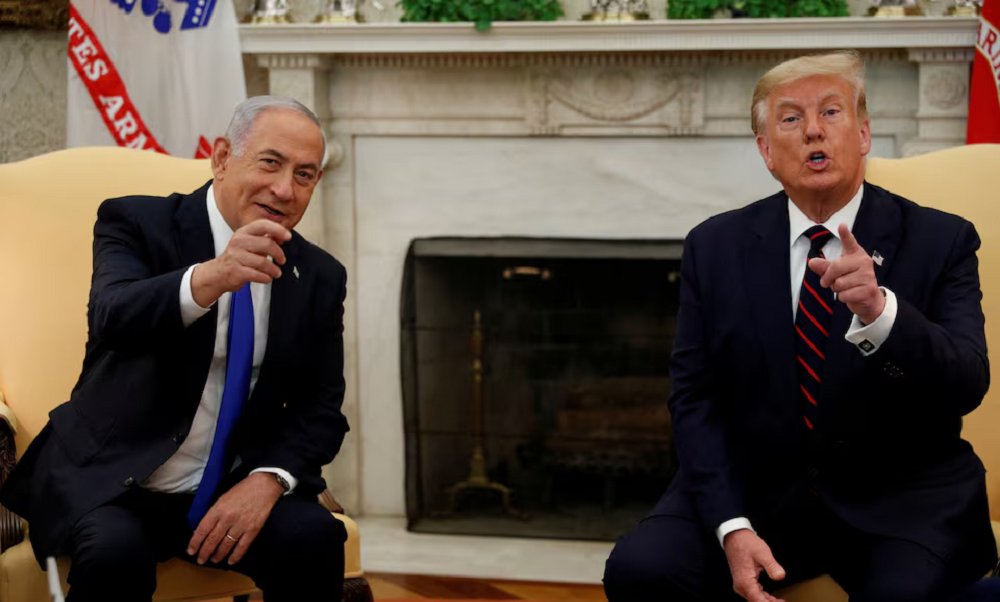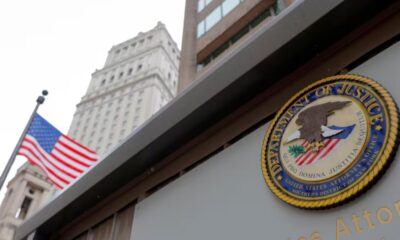World
Russia and China slam NATO after alliance raises alarm

NATO faced rebukes from Moscow and Beijing on Thursday after it declared Russia a “direct threat” and said China posed “serious challenges ” to global stability.
The Western military alliance was wrapping up a summit in Madrid, where it issued a stark warning that the world has been plunged into a dangerous phase of big-power competition and myriad threats, from cyberattacks to climate change, The Associated Press reported.
NATO leaders also formally invited Finland and Sweden to join the alliance, after overcoming opposition from Turkey. If the Nordic nations’ accession is approved by the 30 member nations, it will give NATO a new 1,300 kilometer border with Russia.
Russian President Vladimir Putin warned he would respond if the Nordic pair allowed NATO troops and military infrastructure onto their territory. He said Russia would have to “create the same threats for the territory from which threats against us are created.”
Estonian Prime Minister Kaja Kallas said Putin’s threats were “nothing new.”
“Of course, we have to expect some kind of surprises from Putin, but I doubt that he is attacking Sweden or Finland directly,” Kallas said as she arrived at the summit’s conference center venue. “We will see cyberattacks definitely. We will see hybrid attacks, information war is going on. But not the conventional war.”
China accused the alliance of “maliciously attacking and smearing” the country. Its mission to the European Union said NATO “claims that other countries pose challenges, but it is NATO that is creating problems around the world.”
NATO Secretary-General Jens Stoltenberg said Moscow’s invasion of Ukraine had brought “the biggest overhaul of our collective defense since the end of the Cold War.”
The invasion shattered Europe’s peace, and in response NATO has poured troops and weapons into Eastern Europe on a scale unseen in decades. Member nations have given Ukraine billions in military and civilian aid to strengthen its resistance, AP reported.
Ukrainian President Volodymyr Zelenskyy, who addressed the summit by video link, asked for more. He urged NATO to send modern artillery systems and other weapons and warned the leaders they either had to provide Kyiv with the help it needed or “face a delayed war between Russia and yourself.”
“The question is, who’s next? Moldova? Or the Baltics? Or Poland? The answer is: all of them,” he said.
At the summit, NATO leaders agreed to dramatically scale up military force along the alliance’s eastern flank, where countries from Romania to the Baltic states worry about Russia’s future plans.
They announced plans to increase almost eightfold the size of the alliance’s rapid reaction force, from 40,000 to 300,000 troops, by next year. The troops will be based in their home nations but dedicated to specific countries in the east, where the alliance plans to build up stocks of equipment and ammunition.
U.S. President Joe Biden, whose country provides the bulk of NATO’s firepower, announced a hefty boost in America’s military presence in Europe, including a permanent U.S. base in Poland, two more Navy destroyers based in Rota, Spain, and two more F35 squadrons in the U.K.
The expansion will keep 100,000 troops in Europe for the foreseeable future, up from 80,000 before the war in Ukraine began.
World
NATO takes over coordination of military aid to Kyiv from US, source says
Trump, who will take office in January, has said he wants to end the war in Ukraine swiftly but not how he aims to do so. He has long criticised the scale of U.S. financial and military aid to Ukraine, read the report.

NATO has taken over coordination of Western military aid to Ukraine from the U.S. as planned, a source said on Tuesday, in a move widely seen as aiming to safeguard the support mechanism against NATO sceptic U.S. President-elect Donald Trump, Reuters reported.
The step, coming after a delay of several months, gives NATO a more direct role in the war against Russia's invasion while stopping well short of committing its own forces.
Diplomats, however, acknowledge that the handover to NATO may have a limited effect given that the U.S. under Trump could still deal a major setback to Ukraine by slashing its support, as it is the alliance's dominant power and provides the majority of arms to Kyiv.
Trump, who will take office in January, has said he wants to end the war in Ukraine swiftly but not how he aims to do so. He has long criticised the scale of U.S. financial and military aid to Ukraine, read the report.
The headquarters of NATO's new Ukraine mission, dubbed NATO Security Assistance and Training for Ukraine (NSATU), is located at Clay Barracks, a U.S. base in the German town of Wiesbaden.
A person familiar with the matter told Reuters it was now fully operational. No public reason has been given for the delays.
NATO's military headquarters SHAPE said its Ukraine mission was beginning to assume responsibilities from the U.S. and international organizations.
"The work of NSATU ... is designed to place Ukraine in a position of strength, which puts NATO in a position of strength to keep safe and prosperous its one billion people in both Europe and North America," said U.S. Army General Christopher G. Cavoli, the Supreme Allied Commander Europe.
"This is a good day for Ukraine and a good day for NATO."
In the past, the U.S.-led Ramstein group, an ad hoc coalition of some 50 nations named after a U.S. air base in Germany where it first met, has coordinated Western military supplies to Kyiv.
Trump threatened to quit NATO during his first term as president and demanded allies must spend 3% of national GDP on their militaries, compared with NATO's target of 2%.
Meanwhile, the outgoing Biden administration in Washington is scrambling to ship as many weapons as possible to Kyiv amid fears that Trump may cut deliveries of military hardware to Ukraine.
NSATU is set to have a total strength of about 700 personnel, including troops stationed at NATO's military headquarters SHAPE in Belgium and at logistics hubs in Poland and Romania, read the report.
Russia has condemned increases in Western military aid to Ukraine as risking a wider war.
World
At least 100,000 bodies in Syrian mass grave, US advocacy group head says

The head of a U.S.-based Syrian advocacy organization on Monday said that a mass grave outside of Damascus contained the bodies of at least 100,000 people killed by the former government of ousted President Bashar al-Assad.
Mouaz Moustafa, speaking to Reuters in a telephone interview from Damascus, said the site at al Qutayfah, 25 miles (40 km) north of the Syrian capital, was one of five mass graves that he had identified over the years.
"One hundred thousand is the most conservative estimate" of the number of bodies buried at the site, said Moustafa, head of the Syrian Emergency Task Force. "It's a very, very extremely almost unfairly conservative estimate."
Moustafa said that he is sure there are more mass graves than the five sites, and that along with Syrians victims included U.S. and British citizens and other foreigners.
Reuters was unable to confirm Moustafa's allegations.
Hundreds of thousands of Syrians are estimated to have been killed since 2011, when Assad's crackdown on protests against his rule grew into a full-scale civil war.
Assad and his father Hafez, who preceded him as president and died in 2000, are accused by Syrians, rights groups and other governments of widespread extrajudicial killings, including mass executions within the country's notorious prison system.
Assad repeatedly denied that his government committed human rights violations and painted his detractors as extremists.
Syria's U.N. Ambassador Koussay Aldahhak did not immediately respond to a request for comment. He assumed the role in January - while Assad was still in power - but told reporters last week that he was awaiting instructions from the new authorities and would "keep defending and working for the Syrian people."
Moustafa arrived in Syria after Assad flew to Russia and his government collapsed in the face of a lightning offensive by rebels that ended his family's more than 50 years of iron-fisted rule.
He spoke to Reuters after he was interviewed at the site in al Qutayfah by Britain's Channel 4 News for a report on the alleged mass grave there.
He said the intelligence branch of the Syrian air force was "in charge of bodies going from military hospitals, where bodies were collected after they'd been tortured to death, to different intelligence branches, and then they would be sent to a mass grave location."
Corpses also were transported to sites by the Damascus municipal funeral office whose personnel helped unload them from refrigerated tractor-trailers, he said.
"We were able to talk to the people who worked on these mass graves that had on their own escaped Syria or that we helped to escape," said Moustafa.
His group has spoken to bulldozer drivers compelled to dig graves and "many times on orders, squished the bodies down to fit them in and then cover them with dirt," he said.
Moustafa expressed concern that graves sites were unsecured and said they needed to be preserved to safeguard evidence for investigations.
World
Trump and Netanyahu discuss Gaza hostages and Syria, Israeli PM says

Israeli Prime Minister Benjamin Netanyahu spoke with U.S. President-elect Donald Trump about developments in Syria and a recent push to secure the release of Israeli and foreign hostages held by Hamas in Gaza, he said on Sunday.
Netanyahu said he spoke with Trump on Saturday night about the issue, which will loom large as one of the main foreign challenges facing Trump when he takes office if it is not resolved before he is sworn in on Jan. 20, Reuters reported.
Hamas-led militants killed 1,200 people and abducted more than 250, including Israeli-American dual nationals, during their Oct. 7, 2023 attack on Israel, according to Israeli tallies. More than 100 hostages have been freed through negotiations or Israeli military rescue operations. Of the 100 still held in Gaza, roughly half are believed to be alive.
Israel's response has killed almost 45,000 people, mostly civilians, according to authorities in the Hamas-run Gaza Strip, displaced nearly the entire population and left much of the enclave in ruins.
Trump's Middle East envoy, Steve Witkoff, warned last week during a visit to the region that it would "not be a pretty day" if the hostages held in Gaza were not released before Trump's inauguration.
Trump said earlier this month there would be "hell to pay" in the Middle East if the hostages were not released before he came into office.
A Trump spokesperson on Sunday declined to give further details about the call.
A bid by Egypt, Qatar and the United States to reach a truce that would also include a hostage deal has gained momentum in recent weeks.
Netanyahu said he had spoken with Trump about efforts to secure a hostage release. "We discussed the need to complete Israel's victory and we spoke at length about the efforts we are making to free our hostages," he said.
President Joe Biden's outgoing administration is working hard to achieve a deal. U.S. national security adviser Jake Sullivan, who was in the region last week, said on Thursday he believed a deal on a Gaza ceasefire and hostage release may be close, and deputy national security adviser Jon Finer told Reuters there was momentum in the process.
Netanyahu said he and Trump had also discussed the situation in Syria following the overthrow of President Bashar al-Assad. Israel has carried out hundreds of strikes on Syria's strategic weapons stockpiles in the days since Assad's ouster and moved troops into a demilitarised zone inside Syria.
"We have no interest in a conflict with Syria," Netanyahu said in a statement. Israeli actions in Syria were intended to "thwart the potential threats from Syria and to prevent the takeover of terrorist elements near our border," he said.
-

 Latest News4 days ago
Latest News4 days agoAfghanistan seals T20I series victory over Zimbabwe
-

 World4 days ago
World4 days agoSyrian clerics in former Assad stronghold call for national unity, democracy
-

 Latest News4 days ago
Latest News4 days agoU.S. sentences Afghan man to 30 years in prison for narco-terrorism and witness tampering
-

 International Sports3 days ago
International Sports3 days agoMessi vs Ronaldo: A look at their market values over the years
-

 Latest News4 days ago
Latest News4 days agoInvestment in Afghanistan’s pharmaceutical sector reaches $300 million: Union
-

 Latest News4 days ago
Latest News4 days agoChinese, Tajik officials discuss Afghanistan
-

 Sport4 days ago
Sport4 days agoAfghanistan’s Gulbaddin Naib fined 15% of match fee for dissent
-

 Regional4 days ago
Regional4 days agoHezbollah chief says group lost its supply route through Syria
























